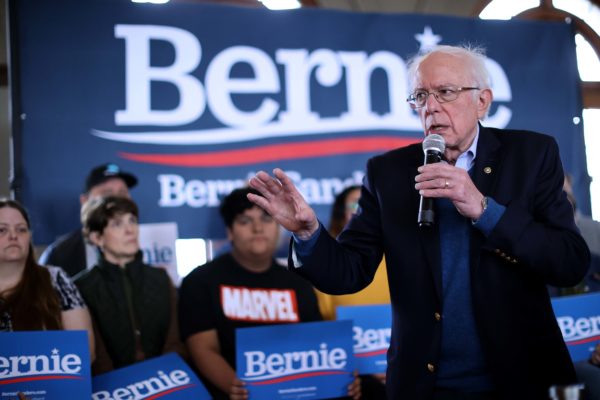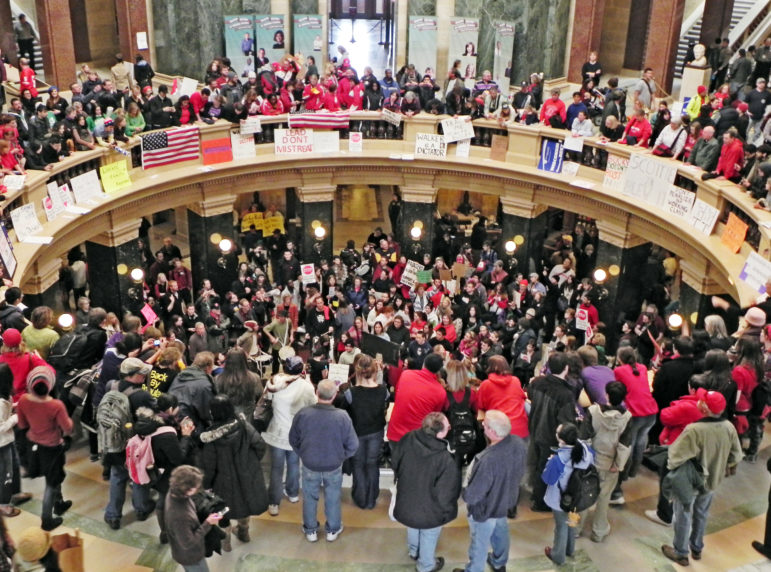And because the race is so close and crowded — the previous Des Moines Register/CNN/Mediacom poll showed the top four candidates separated by only 6 points — the planned release at 8 p.m. Central Time will have political operatives and observers glued to their TV screens and frantically refreshing their web browsers.
But not so fast, pollsters say: Even Selzer’s gold-plated poll shouldn’t be taken as gospel for what is going to happen on Monday night. That’s because, in addition to all the pitfalls that face pollsters around turnout and the composition of a primary electorate, caucuses present their own unique challenges.
The American Association for Public Opinion Research, the leading organization of pollsters, sent a press release to reporters this week urging “pundits and journalists not to rush to judgment on the performance of polls in the aftermath of the Iowa Democratic [c]aucuses.”
“The Democratic caucuses are not ‘just like’ a primary election,” said Nora Cate Shaeffer, a University of Wisconsin professor and pollster who is serving as the association’s president. “The results of the caucuses are more complex than a simple vote count.”
Even Selzer, the dean of Iowa polling, warns that the caucus process — from the elimination of candidates who aren’t “viable” in the initial vote, to the public expressions of support and persuasion on the floor of the precinct — means that her polls can only measure voters’ initial preferences. Those raw votes will be made available by the state Democratic Party for the first time, but the winner will be declared based on a calculation of how many delegates each candidate will win to the state convention later this year.
“The caucuses are designed for people to change their mind in the room on caucus night,” she told POLITICO. “That has always been true, and our polls can only hope to show what they intend to do.”
Going into Saturday’s release, polls generally show a close race among the top four candidates, with either Joe Biden or Bernie Sanders leading the reliable public surveys. But Pete Buttigieg and Elizabeth Warren are still well within striking distance — though they are hovering around the 15 percent viability threshold in individual precinct caucuses.
The first challenge for pollsters isn’t trying to discern what’s going to happen inside the room — it’s who’s going to show up in the first place.
There are 615,000 registered Democrats on Iowa’s voter rolls. But even by the most bullish of estimates, more than half of them won’t venture out on Monday night. Democrats in Iowa have been debating for weeks whether turnout will challenge the roughly 240,000 caucus-goers in Jan. 2008, when then-Sen. Barack Obama finished first.
How many people will turn out is only part of the challenge. Pollsters are also grappling with who, specifically, will show up. Polls show Sanders is the top choice among younger voters, who have been less likely to participate in past caucuses. Biden, meanwhile, leads among older voters.
According to entrance polls conducted before the 2016 Democratic caucuses, just under six-in-10 caucus-goers were aged 50 or older.
Age isn’t the only factor. Some pollsters use past voting history to determine whom they survey, even though records aren’t available for who has participated in caucuses. Monmouth University — which found Biden narrowly ahead of Sanders in a recent survey — restricts its universe of participants to those who have voted in recent primaries or the 2018 general election (or who have registered since the last election).
A New York Times analysis found that Biden has an advantage among voters who have cast ballots in primaries, but were less likely to go to caucuses. Sanders, meanwhile, is running stronger among those who say they are likely to caucus, regardless of their past vote history.
“Caucus electorates are the most difficult to model in polling,” Monmouth University pollster Patrick Murray said in releasing the school’s latest poll this week. “The smartest takeaway from this, or any Iowa poll for that matter, is to be prepared for anything on Monday.”
The Des Moines Register/CNN/Mediacom poll doesn’t take into account past voting history: It includes all registered voters who say they are very likely or will probably go to their caucus.
“We work with the Iowa secretary of state’s voter list, so you need to be registered to vote and not be considered an inactive voter,” Selzer said. “We make no other presumptions about who might show up on caucus night beyond what they tell us.”
Selzer’s track record is part of her mystique among many political professionals and reporters alike. Her final poll in 2016 showed Hillary Clinton 3 points ahead of Sanders, and now-President Donald Trump leading Sen. Ted Cruz on the Republican side. It turned out that Clinton edged out Sanders as the poll predicted, but Cruz defeated Trump.
The 2008 caucuses are perhaps her crowning achievement. Her final poll showed Barack Obama opening up a lead over Clinton and then-Sen. John Edwards — and also correctly foretold a turnout surge that Clinton’s campaign dismissed.
Selzer’s most recent poll, conducted Jan. 2-8, showed Sanders at 20 percent, Warren at 17 percent, Buttigieg at 16 percent and Biden at 15 percent. The next-closest candidate was Sen. Amy Klobuchar of Minnesota, at 6 percent, though other surveys have showed Klobuchar with more support.
That survey did not point to record-breaking turnout, Selzer has said, though she warned that a surge of new caucus-goers sometimes isn’t apparent until the final days.
Between the crowded field and the looming viability threshold, there is little precedent for how Monday night could play out, said Joe Lenski, an executive vice president at Edison Research, which will conduct entrance polls on Monday night for a consortium of news organizations, including ABC News, CBS News, CNN and NBC News.
“We have never had a situation where you’ve had four, maybe even five, candidates all bunched up, sniffing the threshold,” Lenski said.
The closest analogy, Lenski said, is the 2004 Democratic caucuses, when there were also four top candidates: Edwards, John Kerry, Howard Dean and Dick Gephardt.
Selzer’s final poll nailed the order: Kerry first, followed by Edwards, Dean and Gephardt. But, notably, the race wasn’t as close as it looked in the poll, which had the top four candidates within 8 percentage points. Kerry pulled away, while Edwards claimed a solid second place. But Dean and Gephardt sagged — and Gephardt, the congressman from neighboring Missouri, finished with fewer than 12 percent of delegates.
How much of that movement was late momentum and how much was voters rearranging during the caucus process isn’t clear — the state Democratic Party didn’t release an initial, raw vote count in 2004. But Lenski said he doesn’t expect any dramatic swings in the closing days before Monday’s caucuses.
“I don’t think there’s going to be a lot of late movement here,” he said. “This is different than ’04 in that I think all these candidates are much better known.”


